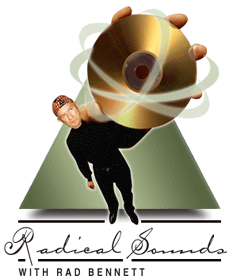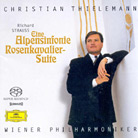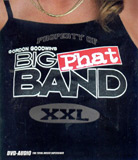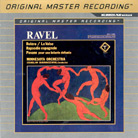 |
| November 1, 2003  Radical Sounds: How Many Channels and How Much Tampering? Radical Sounds: How Many Channels and How Much Tampering?
I remember the early days of DVD, when Dolby Digital 5.1 came into being for home use. I was working at a mail-order company that sold laserdiscs and DVDs. A seemingly endless number of customers called, complaining that such and such a new title did not have Dolby Digital 5.1 tracks, only Dolby Surround. I’d patiently explain to them that Dolby Surround was the original configuration of the title in question, only to be met by such nonsensical answers as, "Well, it shouldn’t have been." A small handful of purists were happy to see original configurations respected and employed. We’re now going through the same thing with the advanced-resolution formats of DVD-Audio and SACD. The industry and some enthusiast magazines seem to feel that there is no use for advanced resolution unless it means more channels. It’s true that both of the new formats are capable of carrying 5.1 channels, but should all those channels be used all the time? I don’t think so. Change is not, by definition, better than what came before; often, it’s just different. I used to live in Washington, DC, just down the street from Ellsworth Music. The owner, the late Mark Ellsworth, was a superb violinist as well as a scholar and a gentleman. Once, when we were discussing J.S. Bach’s sonatas and partitas for solo violin, he offered to show me something. He picked up his violin, tuned it down to the original pitch used in Bach’s day, and played a passage. His single violin sounded like four -- strings not in contact with the bow were picking up resonances from strings that were, and vibrating in sympathy. Mark then tuned the violin up to current pitch, and all the magic disappeared. Bach wrote for a specific time, place, and type of instrument, and knew how to get the most out of the combination. The large movement devoted to playing older music at the correct pitch and with historically authentic instruments indicates that there is much support for that thought. Thus it is -- or should be, I think -- with recordings. The artists and engineers involved in making a disc know what they have to work with, and use their options with skill and expertise to capture a particular sound. They might have had mono in mind, or two channels, or four -- or, nowadays, all of those options plus many more. But to come along after the fact and extract channels that were not there is nothing more than tampering. Remember the early days of stereo, when producers and engineers would gussy up mono recordings by putting all the highs in the left channel and all the lows in the right, to create releases that were "electronically re-channeled for stereo"? The results were atrocious because they had little to do with the intent of the original artists, producers, and engineers. They were akin to colorized videos of black-and-white films, or orchestral arrangements of chamber works. I was, to my knowledge, one of the few reviewers to praise the advanced-resolution mono tracks on the recent Pet Sounds DVD-A. The 5.1-channel tracks surely sounded nice, but they weren’t Pet Sounds. The timbres and relationships of sounds were altered to something else -- an impression of Pet Sounds by someone who was not Brian Wilson. At least the original tracks were included. This was unusual for the DVD-A camp, where producers seem more bent on remixing for the largest number of channels than over on the SACD side, where they often respect the original by reproducing it as intended. I’m listening just now to Steve Earle’s Guitar Town on a magnificent MCA SACD -- just the original two channels in mind-blowing, high-resolution sound. I agree with producers who say that new music should be recorded using multichannel techniques. We have those techniques now, and if they fit the ideas and ideals of the musicians and producers, they are tools to be used. But when we’re addressing older material, it seems to me that we should respect the intentions of the original participants and adhere to solutions of the period, rather than regarding them as "restrictions." It would be interesting to hear how readers feel about this topic. Am I the only radical? Now, on to the three titles this month that made the search for the ultimate fi worthwhile -- one of the strongest trios yet!
Strauss’s gigantic tone poem An Alpine Symphony has already been released on an advanced-resolution DVD-A, ably conducted by Rudolf Kempe. As good as that reading is, it pales in comparison to this one. Thielemann senses every orchestral color in the magnificent orchestration, and his supercharged Viennese players give him exactly what he wants. There are some incredible moments. The high trumpets and blazing horns thrill throughout the whole work, but the entire orchestra seems wired for this live performance. Live? That’s what the notes say, but what a recording for a live venture! In the complex sections where the violins and wind machines shriek in the upper registers as horns and woodwinds hold the center and the trombones and basses growl from the basement, everything is singularly clear and lifelike. The timpani and bass-drum attacks in the storm sequence have riveting presence. Thanks to SACD’s higher resolution, you can sense the millisecond between the actual drumstroke and the membrane response. That’s real fidelity! The multichannel ambience aspects are used a lot, but not to excess, and the surround cowbells in one of the quieter sections are appropriately atmospheric without demanding undue attention. As a performance, the short suite from Der Rosenkavalier is no less successful than the Alpine Symphony. Dance music, the waltz in particular, figures strongly in this music, and Thielemann conveys the 3/4 time so effectively that most listeners will be hard-pressed to sit still. The sound is a bit less robust than that of the larger work, yet still full. A contender for best SACD of the year.
I’ve kept pulling for Silverline to release a winning disc. The company has certainly put out many DVD-Audio titles, but most have been mixes of older live concerts that sound vaguely like four-channel stereo. My vigilance was rewarded in spades with this release, one of the best-sounding and most completely appointed titles in the ever-growing DVD-A catalog. The music could not be better. Gordon Goodwin has assembled a big band comprising the best talent there is, augmented it with Take 6, the greatest jazz vocal ensemble in the business, and generously peppered the mix with the virtuoso solo talents of Brian McKnight, Eddie Daniels, Michael Brecker, and Johnny Mathis. Though there is not a throwaway cut on the disc, a few merit special mention. The charts for "Comes Love," which features McKnight, Take 6, and the band, seem definitive. If I live another 50 years, I can’t imagine a better version. "Hunting Wabbits" is a delightful, wacky, yet precise tribute to Carl Stalling, who wrote the scores for the classic Warner Bros. cartoons. One can almost see Bugs Bunny leading the band. And Johnny Mathis proves himself an indestructible icon in a finely honed blues version of "Let the Good Times Roll" that will knock your socks off. The engineers have played their parts well. The overall sound is somewhat compartmentalized, with definite division among sections: saxophones right, trumpets left, rhythm in the center, rich ambience in the rears. There’s no way this sounds like anything but a recording, but what a great recording! Every sound is clear and defined, yet when the whole band plays, it has magnificent weight and impact. There’s lots of well-defined bass sent to the LFE channel, and the balance when Take 6 joins the band is nothing short of amazing. Every track makes me sit up, take notice, and acknowledge that something very special is taking place. The producers have taken full advantage of the DVD-A format. There are many extras, two including video: a multi-angle video of the recording session for "Comes Love," and a short documentary. Gordon Goodwin provides breezy commentary for each track, and his liner notes are reproduced on still-frame screens. There are also solo transcriptions of the music, with pages shown one by one in still-frame mode. And several songs are presented in a "Make Your Own Mix" feature, in which the listener can hear each instrument’s track separately, then compare them to the composite mix. I don’t give "Best of Year" awards here, but if I did, this disc would be a top contender.
Listening to new recording after new recording, an audio critic can become jaded. Everything sounds okay, yet everything sounds less than great. Then, with no expectation of hearing anything different, the critic puts a disc in the player that blows fresh air and new perspective into the listening room. This is such a disc. These renowned interpretations have been released many times before, on vinyl (in both two-channel and quad mixes), cassette, several CDs, and even a DVD from Classic Records. I have always suspected that the master tapes sounded better than any secondary delivery medium would support, and this hybrid multichannel SACD bears out my suspicions. Marc Aubort and Joanna Nickrenz, obviously way ahead of their time, engineered the original 4.0 quad master recording. This amazing disc was mastered by MoFi’s Paul Stubblebine; Aubort provided retrospective notes. The recorded perspective is from about 12 rows back -- not close, yet there’s no lack of presence. In fact, this recording has more genuine presence and detail than most recorded from the front row. The surround channels give a natural ambience without calling attention to themselves, while helping to portray a very three-dimensional front stage of singular depth. No matter the volume level, the violins sound in front of the woodwinds, which sound in front of the trumpets and horns and percussion. In the Daphnis suite, Aubort, Nickrenz, and Skrowaczewski opted to put the chorus in the rears, and what an effect this makes. The sunrise scene sent chilly bumps up and down my spine -- its beauty created a spiritual experience right in my listening room. Like a gorgeous night sky with more than a thousand pinpoints of light, the warm wash of sound twinkled with details. Though it can’t possibly achieve the effect of 4.0, the two-channel mix is just as good in its way, and the CD layer provides the best reproduction these performances have received in that format. The end of Daphnis is presented in a 5.1 remix, which I feel was a mistake. I’m not against using the center channel, but only if the music was originally recorded with it in the plan. Remixes using the center are tricky; though this one does anchor the woodwinds a bit, it removes some of the buoyant air around them. If you have an SACD surround system, this recording is an essential purchase, and one that every engineer and producer should look to for guidance in 2004. ...Rad Bennett
Ultra Audio is part of the SoundStage! Network. |
 Richard Strauss: An Alpine
Symphony; Der Rosenkavalier: Suite
Richard Strauss: An Alpine
Symphony; Der Rosenkavalier: Suite Gordon Goodwin’s Big Phat
Band: XXL
Gordon Goodwin’s Big Phat
Band: XXL Ravel: Boléro, La Valse,
Pavane pour une Infante défunte, Rapsodie espagnole, Daphnis et Chloé
Suite No. 2
Ravel: Boléro, La Valse,
Pavane pour une Infante défunte, Rapsodie espagnole, Daphnis et Chloé
Suite No. 2